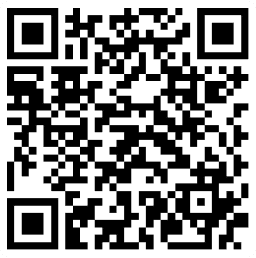
Hotels in South Africa
- Hotel/
- South Africa(8410 Hotels)
Destinations to Discover
Best hotels in South Africa
Discover what you like
Exclusive for new users—register today!
Up to RM 125 off Flights
8% off Hotels
8% off Attractions
10% off Car Rental
12% off Airport Transfer
About South Africa
South Africa is the most southern country in the Africa continent. A coastline for more than 2500 kilometres long surrounds the country and it is stretched from South Atlantic to the Indian Oceans. South Africa also shares their northern borders with several other African countries; the Namibia, Botswana and Zimbabwe. Mozambique is located on the further east and Swaziland (Eswatini) shares a small border at the northeast of South Africa. There is a country that is located inside of South Africa; Lesotho and all of the country is surrounded by South Africa.
South Africa is one of the earliest places where modern humans started to inhabit. There were bones that were found in the country that is said to be at least 170 thousand years. The country contains some of the oldest archaeological and human fossil sites in the world. There is also a UNESCO World Heritage site that is branded as the Cradle of Humankind, about 50 kilometres northwest of Johannesburg,
Bantu-speaking people were the earliest human settlement. These people were present at the south of the Limpopo River, which is now the northern border of South Africa and the Botswana and Zimbabwe. The Bantu-speaking people started to settle in the area around the 4th to 5th century CE. The settlement of the Bantu-speaking people had displaced, conquered and absorbed the original Khoisan speakers, the Khoikhoi and the San people that were there. The Bantu people would eventually migrate further south. The Bantu-speaking peoples were the dominant ethnic group.
In 1487, the first European voyage landed in southern Africa. This Portuguese explorer named Bartolomeu Dias travelled southern Africa, from the western coast to the eastern coast. He had named the now-Cape Town as Cabo das Tormentas (Cape of Storms). King John II had renamed it to Cape of Good Hope as the area that led to the riches of East Indies. The Portuguese did not colonise the area.
In the 17th century, Dutch became interested in the Cape when the employees of the Dutch East India Company (VOC) had a shipwrecked there. Their employees survived thanks to the native people of the Cape as they provided clean water, meat and vegetables. When these employees returned to Holland, they reported the Cape’s potential as a warehouse and garden as provisions to stock passing ships for long voyages. The Cape had become home to a large people of ‘vrijburgers’ or free citizens who were former Company employees who had stayed in Dutch territories overseas after serving their contracts. These Dutch traders also had imported thousands of slaves from Indonesia, Madagascar and parts of eastern Africa. This mixed communities developed into a new ethnic group, the Cape Coloureds that spoke Dutch and had Christian faith. With the eastward expansion of Dutch colonists, series of wars erupted with the Xhosa tribe who were migrating to the southwestern. Both sides were competing for the pastureland near the Great Fish River.
In the 18th century, British colonised Cape Town from 1793-1803 to prevent it from falling into the control of French First Republic. Cape Town became an integral part of the British Empire and the immigration of British people started in 1818. Many of Dutch settlers departed from Cape as they were subjected to British control. The Boers (Dutch who had become the independent farmers and adopted semi-nomad lifestyle) founded the Boer Republics, the South African Republic, and the Orange Free State.
In 1867 and 1884, diamonds and gold were discovered and this led to the Mineral Revolution. Increased economic growth and immigration were seen, and the British intensified their effort to gain control over the indigenous peoples. Wars erupted between the British Empire, the Boers and the Zulu Kingdom (one of the biggest tribe in Africa).
South Africa would eventually have its independence from the British in May 1910. The Union of South Africa includes former territories of Cape and Natal colonies, the republics of Orange Free State and Transvaal. The native people of South Africa only controlled 7% of the country due to the Natives’ Land Act of 1913 that severely restricted the ownership. Though the white people were a minority at less than 20% of the population, it managed to control the people of South Africa. This institutionalized segregation was known as apartheid. The ending of apartheid started in 1990 with the releasing of Nelson Mandela from prison. In 1994, South Africa held its first universal elections and Nelson Mandela became its first black African President.
South Africa is a republic following a referendum in which the white voters voted in favour of it in 1961. The republic has three capitals; Cape Town as the legislative capital, Pretoria is the administrative capital and Bloemfontein as the judicial capital.
How to Get There?
By plane
Getting to South Africa is easy thanks to the flights available. A return ticket flight to Cape Town, South Africa starts from around RM 2,900. There is no direct flight from Kuala Lumpur to Cape Town. Usually, there will be a layover in Dubai or Ethiopia. The Cape Town International Airport is the primary airport serving South Africa and it is 20 kilometres away from the city centre.
A Malaysian passport holder will require a visa before entering South Africa even for tourism purposes. The visa will give Malaysian passport holder 90 days to stay in South Africa. The application for a visa may be made at their embassy.
By Bus
The MyCiTi bus rapid transit system provides a shuttle service connecting the Cape Town International Airport with the Civic Centre bus station in the city centre. Their buses depart every 20 minutes starting from as early as 4.20 in the morning until 10 pm.
By Car or Taxi
The Cape Town International Airport is accessible by the N2 freeway. Driving from the city centre will take about twenty minutes to reach. There are metered taxis available in the city centre that go to the international airport.
What to Do There?
Table Mountain
Table Mountain is a flat-topped mountain that formed a prominent landmark overlooking the Cape Town. It is one of the top tourist attractions in South Africa with people hiking or taking the cableway. The view from the Table Mountain is something that one would not want to miss while visiting South Africa. The main feature of Table Mountain is the flat plateau that is 3 kilometres wide from side to side, with impressive cliffs. On top of Table Mountain, the whole city of Cape Town is visible. Table Mountain is also a part of the Table Mountain National Park.
Cape of Good Hope
Cape of Good Hope is a rocky headland on the Atlantic coast of the Cape Peninsula. It is the home to at least 250 species of birds including a mainland colony of African penguin, other small mammals such as the chacma baboons, one of the largest monkeys in the world. The Cape of Good Hope also has great floras collections. It is one of the world’s six floral kingdoms and though it is the smallest, it is the riches kingdom. There are 1100 species of indigenous plants. The Cape of Good Hope is a part of the Table Mountain National Park that was established in 1998.
Where to Stay?
Cloud 9 Boutique Hotel
This is a bed-and-breakfast type of hotel that is located in the heart of Cape Town. It is a small hotel that provides the comfort and cosiness while travelling to South Africa and enjoying Cape Town. There are quite a number of room, starting from as low as RM 235 up to RM 573 a night. All of the rooms are already including free Wi-Fi connection. Some of their rooms have balconies overlooking the city and the mesmerizing Table Mountain. The hotel also has a sunroof where many of their guests prefer to spend their time, relaxing while enjoying the great view of the Table Mountain across them. The Cloud 9 Boutique Hotel is perfect for those who are looking for a quieter place to stay. It is the hidden gem in the busy town.
Premier Hotel Cape Town
The Premier Hotel Cape Town is located in the fantastic position on the Sea Point beachfront. It is a great place for those who are travelling for vacations or business as it is just ten minutes away from the city centre. The hotel offers five types of room, starting from as low as RM 310 a night for its Standard room up to RM 417 for the spacious Family room. All of the rooms come with free Wi-Fi connections. The restaurant of the Premier Hotel Cape Town is a great place to eat in the area as they offer a wide selection of dishes. The waterfront is about an hour away by walking, and it is a great attraction in the area. The hotel has free shuttle service to the waterfront of the Sea Point every hour for those who do not wish to take a stroll there (though it is very recommended to do so!)
Facts about hotel in South Africa
Total Accommodation | 20 Properties |
Popular Region | Cape Town, Johannesburg |
Popular Hotel | Pepperclub Hotel, Hilton Durban |
Frequently asked questions

Guest reviews in hotel near South Africa
Why book Accommodation in Traveloka?



We’ve got more than just hotels
What interests you?


































 Facebook
Facebook Instagram
Instagram TikTok
TikTok Youtube
Youtube Twitter
Twitter Telegram
Telegram